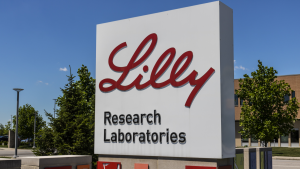
What has been the top-performing stock so far of 2024?
If you had said server installer Super Micro Computer (NASDAQ:SMCI), that would be a great answer. Louis Navellier’s AI bet has surged 260% this year over AI excitement. Sezzle (NASDAQ:SEZL) would have been an even better response. This fintech startup has risen 280% since January.
But among large companies, the biggest winner has been Viking Therapeutics (NASDAQ:VKTX), a firm that’s surged 360% since the start of the year. The company is developing a new weight-loss drug, and initial studies suggest it could be even more effective than current solutions. William White covers the news for InvestorPlace.com, our free news site.
Meanwhile, many small-cap healthcare firms have done even better. Elevation Oncology (NASDAQ:ELEV) is an early stage cancer research firm that has seen shares surge 840%. In fact, 12 of the top 20 stock performers this year (including small caps) are either biotech or pharmaceutical firms.
That’s because biotech firms can be incredible bets. These small firms often have multibillion-dollar therapies in their pipelines… and the public only learns about them when clinical trial data is finally published.
Fortunately, these types of companies leave “clues” about their potential success. Medical experts and corporate insiders often know how clincial trials are unfolding well before the public is aware, and it turns out that following (legal) insider trades is one of the best ways to outperform. Corbus Pharmaceuticals (NASDAQ:CRBP) – the fourth-best performer this year – has seen almost $50 million of insider purchases since January.
That’s why I’m excited to share Luke’s most recent work. Over the past several months, he and his team have come up with a quantitative method to detect these types of biotech winners before they break out. He’s already identified a small group of six plays in a biotech subsector that he believes could be the biggest winners. (Get the full details here).
In the meantime, our writers at InvestorPlace.com and I have also been researching top healthcare stocks to buy. To get you started, here’s what we’ve found:
5 Healthcare Stocks to Buy for 2024: Nuvectis (NVCT)

Shares of biopharmaceutical firm Nuvectis (NASDAQ:NVCT) soared 200% after going public at $5 per share in 2022. Chris MacDonald noted at the time that the intriguing oncology company was an exciting bet on a novel cancer-beating therapy:
The company’s key drug candidates include NXP800, a clinical-stage HSF1 pathway inhibitor. This drug is undergoing a Phase 1 study in patients with advanced tumors. This drug, along with NXP900, a preclinical SRC/YES1 kinase inhibitor, are ones that have a more speculative growth trajectory, given their early-stage status.
Fast forward two years, and Nuvectis has seen a sudden string of good news. In February, the U.S. Food and Drug Administration (FDA) granted the NXP800 development program both Fast Track and Orphan Drug designations. The following month, Nuvectis would report positive preliminary data for its Phase 1b clinical trial.
Perhaps the best news has been a recent $50,000 share purchase made by CEO and Chairman Ron Bentsur four days after the Phase 1b results were announced. On March 18, the 10% owner added 5,000 shares to his existing 3.2 million stake.
That’s an incredibly bullish sign. The company’s Phase 1b trials only included four patients, and the preliminary data is scant at best; only insiders like Bentsur would have full knowledge of efficacy. And the fact that he is adding even more to his already sizable stake suggests Bentsur knows something that markets do not.
That tells us that Nuvectis could be worth a small wager. I’ve found other 10x biotech winners before based on these types of insider buys, and Nuvectis looks much like these past bets.
Eli Lilly (LLY)

In January, my MarketMasterAI stock-picking system ranked Eli Lilly (NYSE:LLY) as the top healthcare company to buy. The pharmaceutical giant came in seventh place overall.
Since then, shares of the Indiana-based firm have risen 30% on growing excitement over its GLP-1 weight loss drugs Zepbound and Mounjaro. Sales of the latter already exceeded $5 billion in 2023, and demand is so red-hot that shortages are expected throughout 2024.
Last Sunday, Dmytro Spilka wrote that Eli Lilly might now become the world’s first trillion-dollar pharmaceutical company. Zepbound, which was made available in December, recorded $175.8 million in sales within a month, smashing through analysts expectations of $75 million. And if profits continue rising at their current rate, Eli Lilly could reach that milestone as soon as this year.
Muslim Farooque goes even further and plainly calls Eli Lilly a name that could make you filthy rich.
A look at its spectacular Q4 results shows the incredible impact of its anti-obesity drugs on its top-line results. Q4 sales were at $9.35 billion, an extraordinary 28% increase YOY. Its anti-obesity offering in Mounjaro contributed $2.2 billion during the quarter, representing about 25% of total sales. Moreover, Zepbound, its latest weight-loss injection, generated $175.8 million in its debut quarter, with more growth expected ahead.
In short, Eli Lilly and its competitor Novo Nordisk (NYSE:NVO) are sitting on a type of therapy that comes around only once every couple of generations. Around two-fifths of adults are overweight or obese globally, and that figure is as high as 60% in developed countries. Not only does this “miracle weight loss drug” work well – its market is absolutely enormous.
Schrodinger (SDGR)

Alex Sirois flags Schrodinger (NASDAQ:SDGR) as a stock to buy. The software research firm is part biotech stock and part AI stock.
In order to develop a therapeutic, biotechnology firms first have to identify molecules that have the potential to treat a target disease. It’s a painstaking process that is becoming easier through the use of computers, machine learning, and artificial intelligence.
Schrodinger has emerged as a leading name in that space. The company essentially does two things. One, it licenses its technology to firms wishing to discover molecules with treatment potential. Two, the company is also currently building a portfolio of clinical and preclinical programs.
Schrodinger has seen significant real-world success. Sirois notes that Q4 revenues grew by more than 30%, and that Schrodinger itself maintains an ability to produce a blockbuster drug of its own. Advances in AI computing power also gives the chemical simulation firm a new edge.
Of course, Schrodinger isn’t the only company involved in AI-related drug discovery. But Schrodinger’s early start, rising revenues and deep pockets allows it to pour resources into research and development (R&D) in a way that many competitors simply cannot. Analysts expect Schrodinger to spend over $200 million on R&D this year, almost 95% of its revenues.
Luke Lango wrote about this company as early as 2021. Accelerating growth and improving technologies suggest now could be an ideal time to revisit this moonshot bet.
IBB and XBI

Finally, investors seeking a big-picture investment should read Eric’s latest report on the Two Different Flavors of Biotech. In it, he explains why both the blue-chip iShares Biotechnology ETF (NASDAQ:IBB) and the riskier SPDR S&P Biotech ETF (NYSEARCA:XBI) are bets worth taking.
In the case of the former, more conservative pick:
Many of the biggest pharmaceutical companies in the world are paying tens of billions of dollars to snap up promising, albeit profitless, biotech companies. You could call it a biotech gold rush.
Presumably, the “crazy” prices major pharmaceutical companies are paying to acquire early-stage biotech companies aren’t crazy at all. The acquiring companies must believe that they can utilize AI to quickly convert the profitless potential of their biotech acquisitions into robust profitability.
Essentially, the IBB ETF focuses on blue-chip stocks. Eight of its top 10 constituents produce profits, and its largest holdings include firms like Gilead (NASDAQ:GILD), Regeneron (NASDAQ:REGN) and Amgen (NASDAQ:AMGN). On average, these firms trade at a 22.6x forward P/E ratio, barely above its 10-year average of 19.6x.
Meanwhile, the riskier SPDR S&P Biotech ETF gives greater upside potential. As Eric also notes:
When animal spirits are running hot in the stock market, the speculative XBI portfolio outperforms the relatively conservative IBB portfolio by a wide margin.
That’s because the XBI ETF covers more speculative bets. Only one of the top 10 holdings of the XBI portfolio has booked a profit during the last 12 months. And given the stock market’s recent rally, it’s no surprise that XBI has risen 30%, compared to IBB’s more muted 12%.
In either case, he believes that AI-enhanced drug discovery will help revolutionize the economics of drug discovery. Rather than pour millions of dollars into unknown cures, biotech firms may be able to virtually test these therapies first, and advance only the best candidates into human trials.
The Quant Edge
The bets you’ve just read rely heavily on fundamental research. Insider purchases… blockbuster drugs… AI developments… these are all factors that can change the course of a company.
However, fundamental factors aren’t always present. A lull in the biotech industry during 2016 through 2020 left few good options besides the largest firms. And insiders aren’t always buying shares of their companies for the right reasons.
As luck would have it, Luke’s latest project helps investors overcome this. In his 2nd Trillion-Dollar AI Trade summit, he explains why his system is picking out bets that are performing even better than regular breakout stocks. And the timing for this summit couldn’t have been better, because a certain change in policy is about to send certain biotech stocks soaring. And thanks to Luke’s system, he’s been able to identify six stocks that are poised to skyrocket. He put all six of these tiny companies inside a brand-new report called The 6,000% A.I. Biotech Blueprint. Find out how to access it here.
On the date of publication, Thomas Yeung did not have (either directly or indirectly) any positions in the securities mentioned in this article. The opinions expressed in this article are those of the writer, subject to the InvestorPlace.com Publishing Guidelines.







